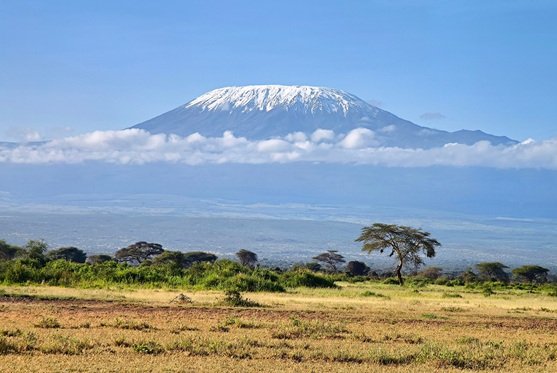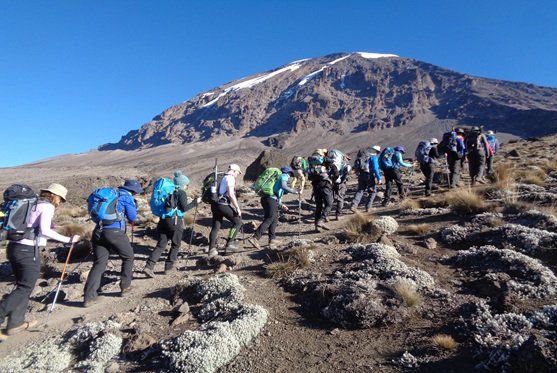
Kilimanjaro National Park Mount Kilimanjaro is one of the largest volcanoes in the world. It has three main volcanic peaks, Kibo, Mawenzi, and Shira. With its snow-capped peak and glaciers, it is the highest mountain in Africa. The mountain has five main vegetation zones from the lowest to the highest point: Lower slopes, montane forest, heath and moorland, alpine desert and summit. The whole mountain including the montane forest belt is very rich in species, in particular mammals, many of them endangered species. For this combination of features but mostly its height, its physical form and snow cap and its isolation above the surrounding plains, Mount Kilimanjaro is considered an outstanding example of a superlative natural phenomenon..
The World Heritage Committee recommended extending the national park to include more areas of montane forest. Following a 2005 extension, the National Park includes the whole of the mountain above the tree line as well as the natural forest (montane forest) which was under Kilimanjaro Forest Reserve, and as such fulfils the criteria of integrity. It is important that the extension of the National Park be reflected in the boundaries of the property.


Kilimanjaro National Park is protected under national legislation as a National Park and a management plan is in place. The property requires an effective and managing organization, including sufficient well equipped ranger presence to be able to carry out surveillance and implementation of the management plan. A key management issue is maintaining the aesthetic quality of the property as a spectacular natural site.